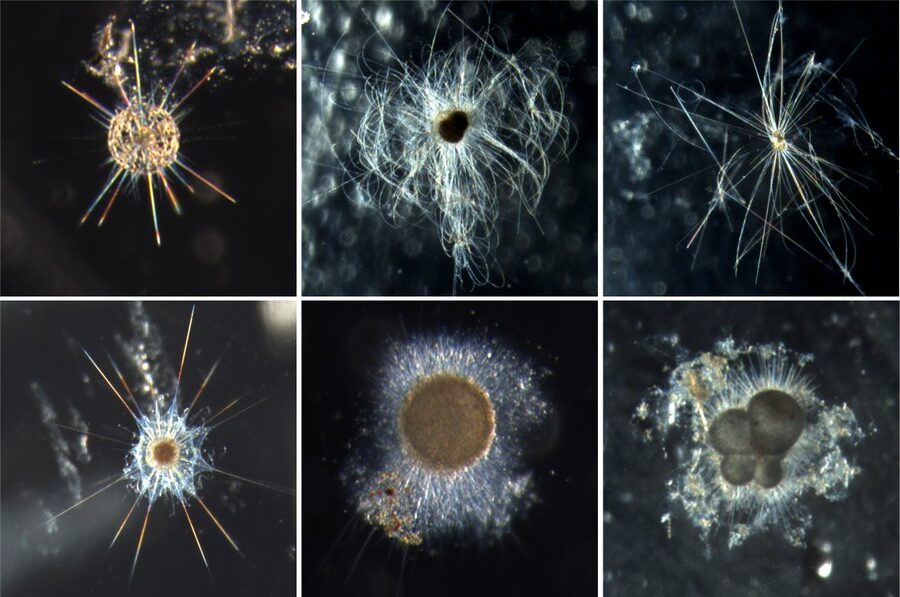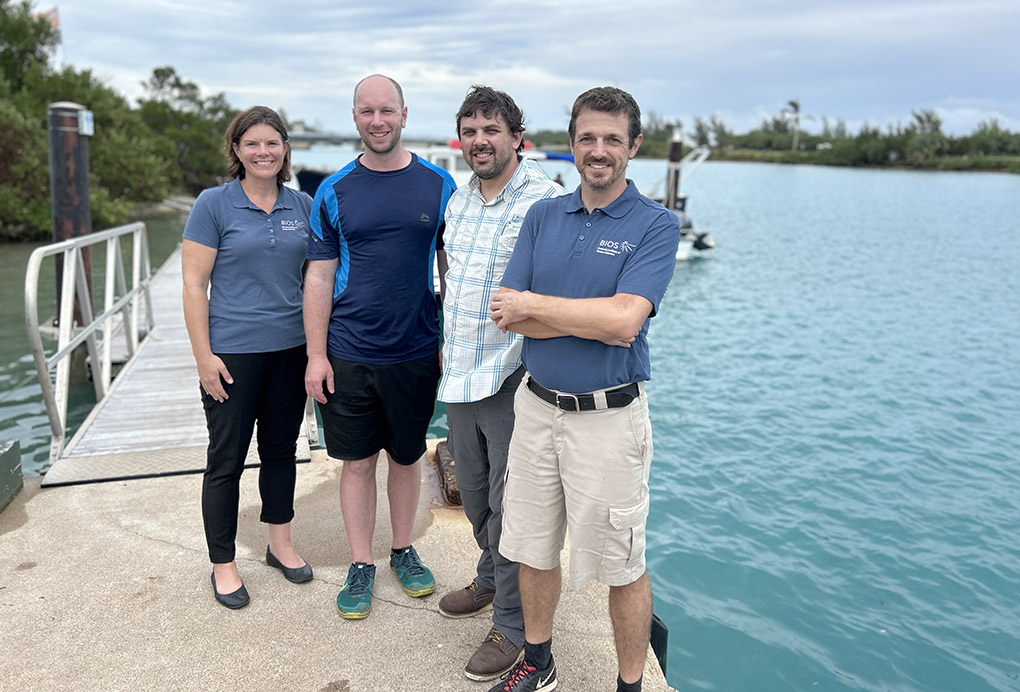New Collaborative Rhizaria Research Project Underway

Over the next three years, a team of researchers and students will collect and analyze samples from the Bermuda Atlantic Time-series Study (BATS) site. Their data will contribute to quantifying patterns of Rhizaria abundance and biomass for use in developing models of the diverse organisms’ contributions to biogeochemical fluxes off the southeast of Bermuda. Images processed at BIOS from this supergroup, known for building mineral exoskeletons using, silica, strontium, or calcium will be uploaded and added to the EcoTaxa database, a web-based image processing platform specifically designed to manage identify and analyze plankton sample imagery.
A diverse and abundant group of single-celled marine organisms, Rhizaria are known to affect carbon and other chemical cycles of the world’s oceans, but specifics are lacking. Research has been hampered by difficulties sampling, culturing and preserving many types of this protist super-group, and they have been underrepresented in models of global geochemical cycling as a result. Researchers and partners from two U.S. universities are seeking to change that narrative through a new three-year National Science Foundation-funded study.
Looking specifically at the role Rhizaria play in nutrient-depleted (oligotrophic) marine environments, such as the Sargasso Sea, the study got underway in October. Over the next three years, the team will collect and analyze samples from the Bermuda Atlantic Time-series Study (BATS) site. Their data will contribute to quantifying patterns of Rhizaria abundance and biomass for use in developing models of the organisms’ contributions to biogeochemical fluxes at this site off Bermuda’s southeast coast.
Rhizaria are present in oligotrophic ocean environments around the world and “could play a major role as gatekeepers of the carbon, silica, and other elements’ flux to the deep ocean,” said zooplankton ecologist and assistant professor Leocadio Blanco-Bercial, the study’s principal investigator (PI).

Co-principal investigators; Kaitlin Noyes, Joshua Stone of the University of South Caroline, Jacob Cram from the University of Maryland, and Leo Blanco-Bercial.
Joining Blanco-Bercial on the project team are Director of Education and Community Engagement Kaitlin Noyes (Co-PI), Jacob Cram of the University of Maryland Center for Environmental Science, Josh Stone of the University of South Carolina Department of Biological Sciences, and Lauren Kittell-Porter, a marine ecologist and PhD candidate at Arizona State University. Noyes will broaden dissemination of the research through K-12 educational outreach, including creating a simplified data set to increase understanding of Rhizaria distribution, functions and contribution to the carbon cycle.
Initial work this fall involved sampling near Bermuda to refine the study methodology. Blanco-Bercial said the team has also been collecting marmalade jars – containers that will enable the team to avoid having to redesign and use hand-made jars for a sediment trap, and which are the perfect size for sampling Rhizaria: 60 to 65 millimeters in diameter and less than four centimeters tall. On the high-tech side, researchers will be aided by a new FlowCam – a precision instrument that captures high-resolution digital images of subvisible particles and microorganisms in flowing water – funded by a grant from Trustee Emeritus Robert E. Cawthorn.
At the outset, the team posited three hypotheses:
- that total Rhizaria biomass at BATS is 150 to 300 percent greater than current estimates;
- that Rhizaria will show distinct vertical and seasonal communities at BATS, correlated with distinct environmental variables;
- that, on net, Rhizaria will increase the modelled sequestration of carbon, silica and strontium in the deep ocean.
“Given the large global extent of oligotrophic oceanic gyres, accurate modeling of carbon cycling in these regions is critical to predictions of climate change effects and feedback loops,” Blanco-Bercial states. “Our research will provide measurements of a large and previously understudied biological carbon pool. These measurements will provide information necessary for refining global carbon and climate change models.”
“We are very excited about this grant. This is a group of plankton that is abundant here and at its best in terms of ecological significance. And the team is very well equipped to make a significant advances. Some of us will be fortunate to get a lot of ship time, and I hope that we will all enjoy the next three years!”
